When soft HR meets hard HR — the implementation of SAP SuccessFactors in an organization with SAP HCM. Business Perspective (Part 3/3)

The success of implementing the hybrid SAP SuccessFactors and SAP HCM model depends on the commitment of the teams and a clear communication of the benefits of the new system. Appropriate training and preparation of the organization for changes in processes and work culture are also important. Ultimately, success depends on how well technology adapts to the needs of employees and managers to make it a natural tool for work.
Solution adoption, organizational change and user engagement
Technology is one thing, but the success of implementing SuccessFactors alongside SAP HCM depends heavily on people and organizational culture. The hybrid model requires adaptation both on the part of the HR team and on the part of all employees and managers using the new tools. Here are the key aspects to look out for:
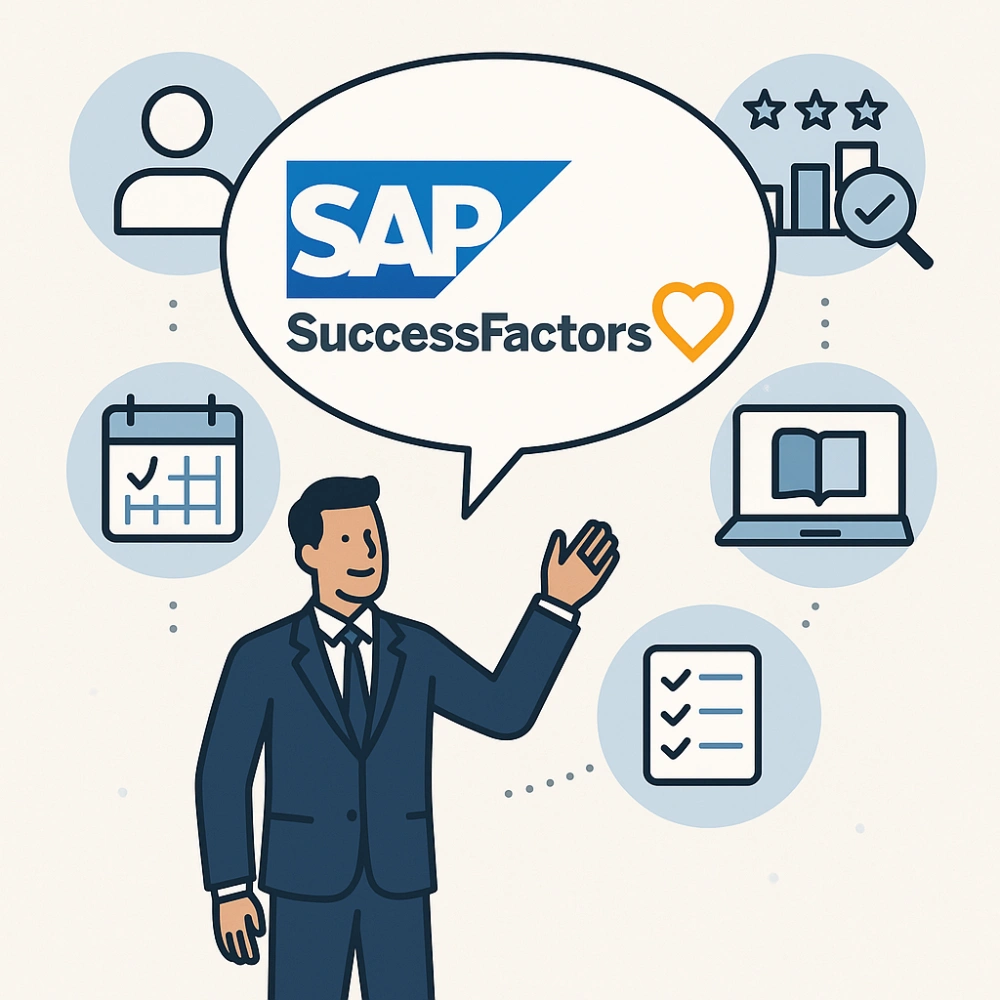
Communicating Vision and Benefits
When introducing a new system (SuccessFactors) to an environment where SAP HCM has been operating for years, it is important to clearly communicate why we are doing it.
Employees should understand how the new solution will benefit them:
- easier access to your own data,
- easier application of leave applications,
- a transparent assessment process,
- the opportunity to participate in e-learning trainings, etc.
Managers, on the other hand, should be convinced that they gain tools to support team management (e.g. talent reports, intuitive approval of applications, insight into succession).
The key is to build a positive attitude — people should see change as an improvement, not an additional obligation.
Involvement of stakeholders and key users
The HR department should be actively involved in the SuccessFactors implementation project from the very beginning. They are the ones who know their processes best and know where the ills of the old system lie.

It is worth appointing ambassadors of change from among HR employees and business representatives (e.g. line managers) who will participate in the design of new solutions and tests. Their feedback will help to adapt the system configuration to the realities of the company.
Such ambassadors, having a sense of influence, will later become advocates of a new solution in their departments, facilitating adoption. And let's not forget the IT department — hybrid means integrations, data security, access management in two systems. IT support and joint role determination (who is responsible for what after implementation) is essential.
Training and user support
Although SuccessFactors is considered to be an intuitive system, user training is essential. For the HR team administering data or processes in SF (e.g. HR specialists for training, recruiters using the Recruitment module, compensation manager planning increases in the Compensation module), in-depth training in the new functionalities should be provided.

At the same time, all employees and managers should receive readable materials (e.g. short step-by-step instructions, screen videos) showing how to perform typical actions in the new system: submit an application, set a goal, evaluate the employee, etc.
It is best to share this information just before starting the modules and remind you about it in the first weeks of using SF. It is also worth providing multi-channel support after the start - HR hotline or email address, where users report problems, as well as internal “super users” to help colleagues in departments.
Process change management
When implementing SuccessFactors, we often simplify or modify existing HR processes to adapt them to best practices in the system. This is a positive change, but it requires the preparation of the organization.
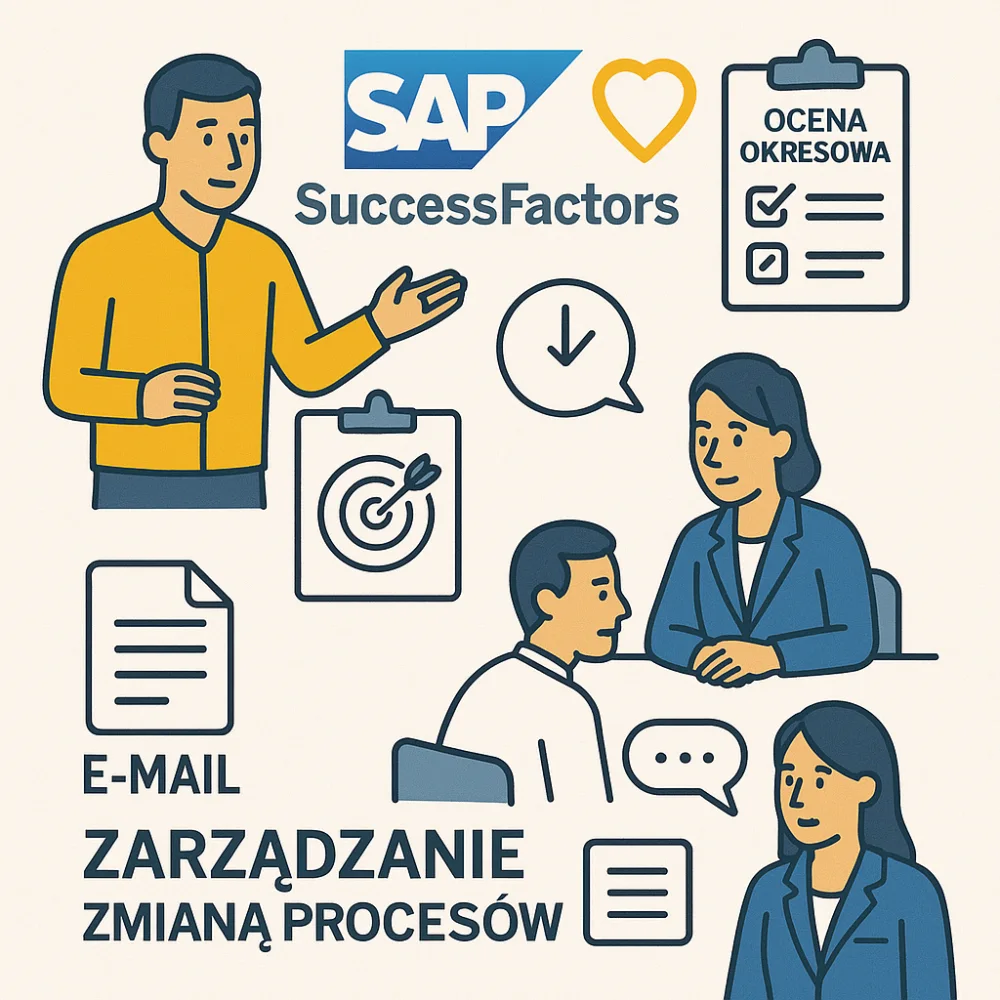
For example, if previously periodic evaluations were once a year on paper, and now we are planning quarterly reviews of goals in SF - managers need to be prepared for this and convinced of the meaning of the new approach.
Similarly, the transition from traditional email recruitment to systemic candidate support in the Recruitment module means a change in the work of HR department and recruitment managers.
Organizational culture may need to evolve — the system itself will not improve feedback in the company, for example, if it is not followed by training managers on how to conduct appraisal conversations and use data from the system.
Good practice is to conduct workshops for executives in which we will present new processes and highlight their role in their success. Official HR regulations or policies (e.g. evaluation policy, training policy) should also be updated to formally include the use of the new tool.
Integration of employee experience
Ultimately, the employee should not feel that they are using two different systems (HCM and SuccessFactors). The more you can integrate end user support, the better.
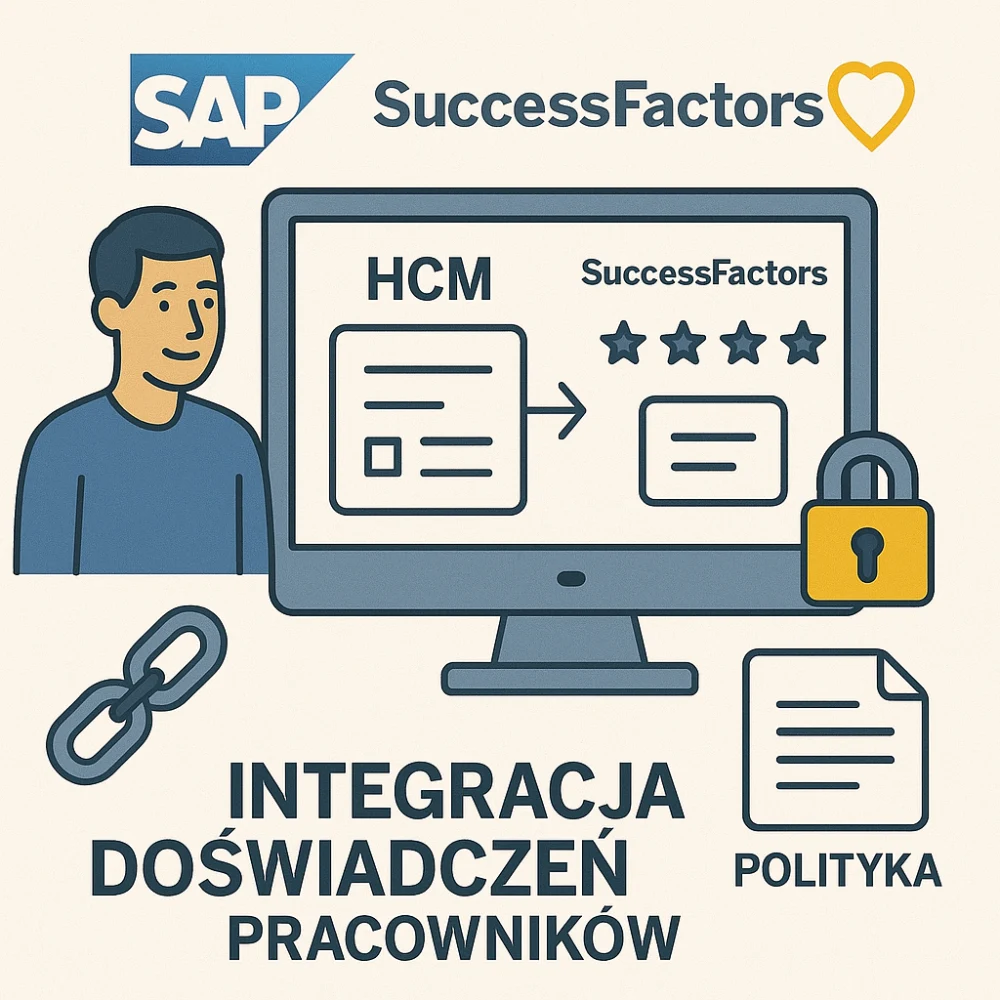
For example, you can place uniform links and SSO login in internal portals, so that the employee has a single entrance to the “HR system” regardless of whether the data comes from HCM or SF underneath.
Some companies choose to leave the SAP HR portal (SAP Portal/Fiori) for the hard cases and use SuccessFactors only for the soft ones — but it is becoming increasingly popular to consolidate the frontend.
SAP provides integration tools such as UI mashup — you can embed the SAP HCM screen (e.g. payroll preview) in the SuccessFactors interface, so that the employee sees everything consistently.
Considering such an option can increase acceptance - the user has one HR “center”. It is also important to establish clear messages where to look for a given function: e.g. “do you report holidays in the old system or already in the new one?”. The transition period can be confusing if we do not lay out what, where and from when it is served.
Measuring Adoption and Feedback
After launching SuccessFactors, it is worth monitoring the level of use of new modules: how many employees have set goals in the system, how many managers have completed assessments, how often users log in, whether candidates apply through the new recruitment portal.
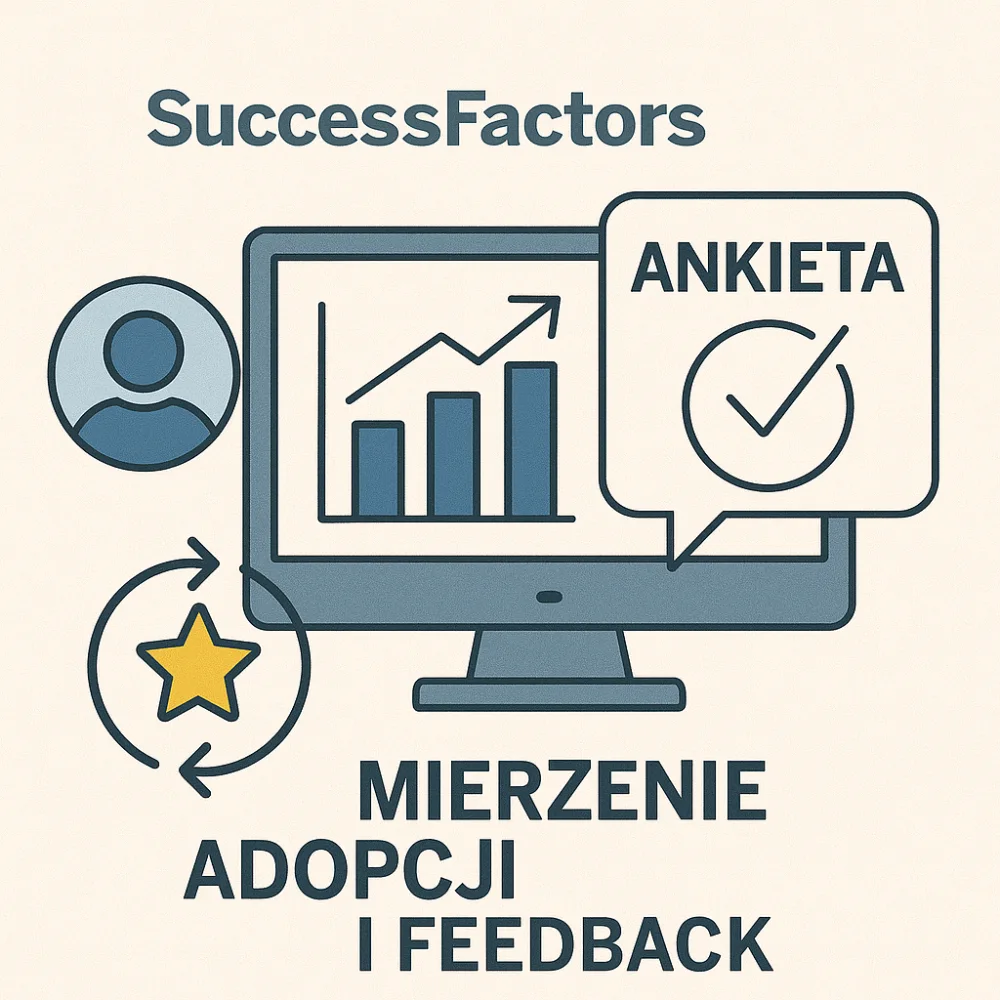
SuccessFactors offers some reports and statistics to help here. In addition, let's collect feedback — e.g. a survey among users after the first cycle of evaluations: what worked, what needs improvement?
Thanks to this, improvements or additional training can be introduced. Adoption is a process — it is not enough to start the system, you have to make sure that it becomes a natural tool of work.
Sometimes internal campaigns promoting a new approach are useful (e.g. mini competition for the most interesting goals entered in the system, messages from the management board appreciating the use of the platform, etc.).
User engagement increases when they see real value from the system and feel confident in using it. The task of project leaders is therefore not only to provide a tool, but also to guide people through the change—from the initial stage of uncertainty to the phase when the new operating model becomes “business as usual”.
Summary of SAP SuccessFactors implementation in an organization with SAP HCM from a business perspective
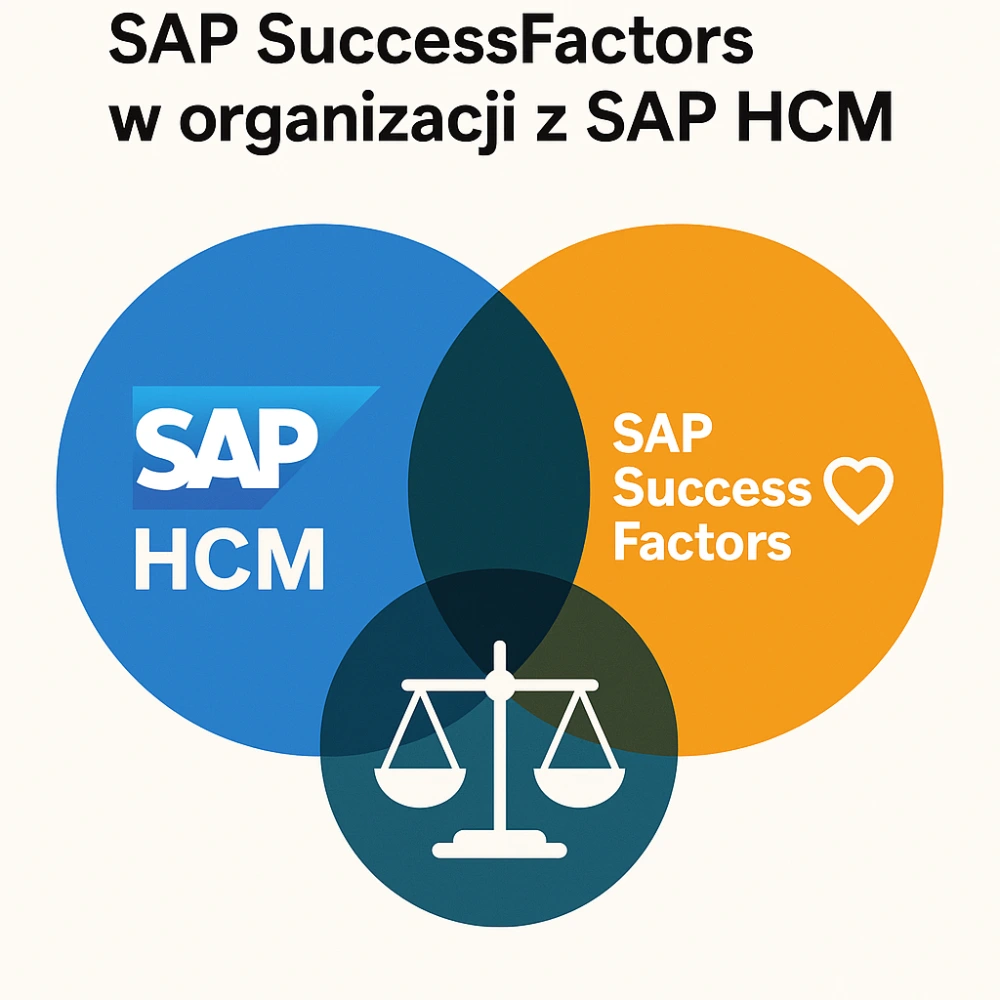
The implementation of SAP SuccessFactors in an organization using SAP HCM is not a real undertaking, but also a great opportunity. The business-hybrid approach allows you to draw on the strengths of both worlds: stability and compliance with local requirements (hard HR in SAP HCM) and innovation and modern user experience (soft HR in the cloud). You can read more about the hybrid approach in including article.
The key is to find the right balance for your business: choosing which processes to move to the cloud and which ones to temporarily maintain on-premise, and how to organize the coexistence of the two platforms. As we can see, the Polish market is often inclined to such a compromise — wages and working time remain in a proven system, while SuccessFactors improves the areas of employee development.
From an HR perspective, the hybrid can bring tangible benefits: from improving the day-to-day work of HR, to better employee experiences, to modernizing the processes and data needed to make decisions about people. However, the prerequisite is smooth technological and organizational integration—data must flow seamlessly between systems, and people must want to use it. Hence the important role of both IT architects (responsible for integration) and change leaders (responsible for people).
Finally, it is worth asking the question: is your organization ready for such a combination of forces of SAP HCM and SuccessFactors? Perhaps you are facing the decision to transform HR — are you considering a hybrid model or a full migration to the cloud right away?
What do you see as the biggest fears or, on the contrary, the opportunities associated with such a project? Share your feedback or contact us to talk about how best to plan for the future of HR in your company. We will be happy to help you find a solution tailored to your needs.
Latest Articles
In the face of digital transformation, HR departments must decide the future of their systems. The most frequently chosen direction is a hybrid model that combines the best features of both platforms.
A frequent choice for modern HR becomes a hybrid model. What strategy — SAP HCM Master or SAP SuccessFactors EC Master — will best prepare your organization for the future in the cloud?

